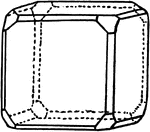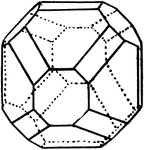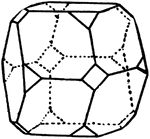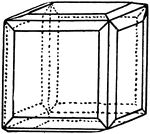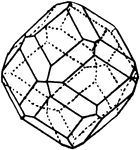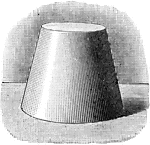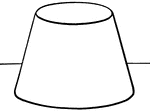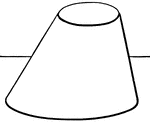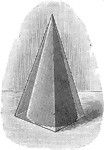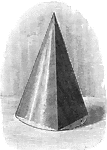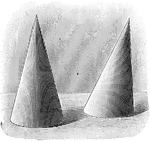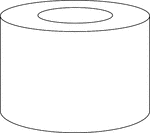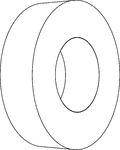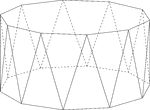
Decagonal Antiprism
Illustration of a decagonal antiprism. An antiprism is formed by having two parallel congruent bases…
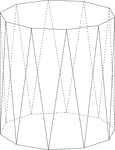
Decagonal Antiprism
Illustration of a decagonal antiprism. An antiprism is formed by having two parallel congruent bases…

Dodecagonal Antiprism
Illustration of a dodecagonal antiprism. An antiprism is formed by having two parallel congruent bases…
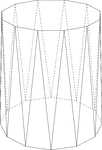
Dodecagonal Antiprism
Illustration of a dodecagonal antiprism. An antiprism is formed by having two parallel congruent bases…

Heptagonal/Septagonal Antiprism
Illustration of a heptagonal, or sometimes known as a septagonal antiprism. An antiprism is formed by…
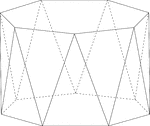
Heptagonal/Septagonal Antiprism
Illustration of a heptagonal, or sometimes known as a septagonal antiprism. An antiprism is formed by…
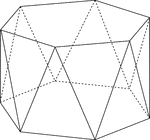
Hexagonal Antiprism
Illustration of a hexagonal antiprism. An antiprism is formed by having two parallel congruent bases…
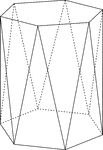
Hexagonal Antiprism
Illustration of a hexagonal antiprism. An antiprism is formed by having two parallel congruent bases…
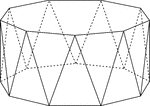
Nonagonal Antiprism
Illustration of a nonagonal antiprism. An antiprism is formed by having two parallel congruent bases…
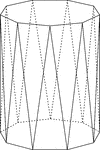
Nonagonal Antiprism
Illustration of a nonagonal antiprism. An antiprism is formed by having two parallel congruent bases…

Octagonal Antiprism
Illustration of an octagonal antiprism. An antiprism is formed by having two parallel congruent bases…
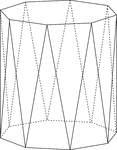
Octagonal Antiprism
Illustration of an octagonal antiprism. An antiprism is formed by having two parallel congruent bases…
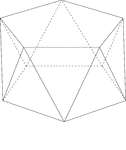
Pentagonal Antiprism
Illustration of a pentagonal antiprism. An antiprism is formed by having two parallel congruent bases…

Pentagonal Antiprism
Illustration of a pentagonal antiprism. An antiprism is formed by having two parallel congruent bases…
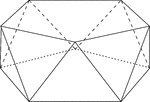
Pentagonal Antiprism
Illustration of a pentagonal antiprism. An antiprism is formed by having two parallel congruent bases…
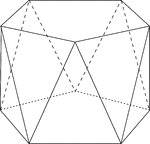
Pentagonal Antiprism
Illustration of a pentagonal antiprism. An antiprism is formed by having two parallel congruent bases…
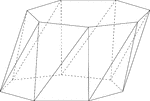
Skewed Heptagonal/Septagonal Antiprism
Illustration of a skewed (non-right) heptagonal, or sometimes known as a septagonal antiprism. An antiprism…
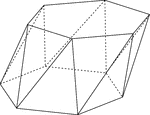
Skewed Hexagonal Antiprism
Illustration of a skewed (non-right) hexagonal antiprism. An antiprism is formed by having two parallel…

Skewed Nonagonal Antiprism
Illustration of a skewed (non-right) nonagonal antiprism. An antiprism is formed by having two parallel…

Skewed Octagonal Antiprism
Illustration of a skewed (non-right) octagonal antiprism. An antiprism is formed by having two parallel…
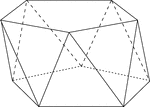
Skewed Pentagonal Antiprism
Illustration of a skewed (non-right) pentagonal antiprism. An antiprism is formed by having two parallel…
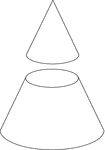
Cone Cut By Plane
Illustration of a right circular cone that has been cut by a plane parallel to the base. The lower part…
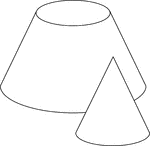
Cone Cut By Plane
Illustration of a right circular cone that has been cut by a plane parallel to the base. The top section…

Lateral Area of Cone of Revolution
Illustration of a cone of revolution used to show that the lateral area is equal to half the product…
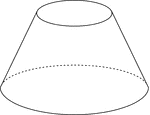
Frustum of A Cone
Illustration of a frustum of a right circular cone with hidden edges shown. When a cone is cut by a…
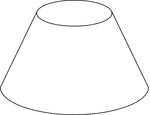
Frustum of A Cone
Illustration of a frustum of a right circular cone. When a cone is cut by a plane parallel to the base,…
Frustum of Cone to Find Lateral Area
"The lateral area of a frustum of a cone of revolution is equal to half the sum of the circumferences…

Frustum of Cone to Find Volume
"The volume of a frustum of a circular cone is equivalent to the sum of the volumes of three cones whose…
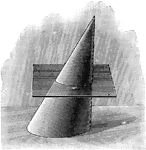
Plane Parallel to Base, Passing Through a Cone
Illustration of a plane parallel to the base passing through a cone (section made is a circle).

Plane Parallel to Base, Passing Through a Cone
Illustration of a plane parallel to the base passing through a cone (section made is a circle).
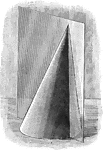
Plane Passing Through the Vertex of a Cone
Illustration of a plane passing through the vertex of a cone (section made is a triangle).
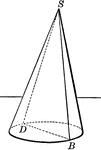
Plane Passing Through the Vertex of a Cone
Illustration of a plane passing through the vertex of a cone (section made is a triangle).

Cone With Regular Polygon Inscribed and Circumscribed About
Illustration of a pyramid and with a regular polygon inscribed in and circumscribed about a cone. "If…
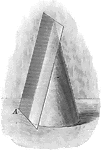
Tangent Plane to a Cone
Illustration of a plane tangent to a cone which contains one element of the cone but does not cut the…

Volume of Cone
Illustration of a cone with a polygon inscribed used to show that the volume of a circular cone is equal…
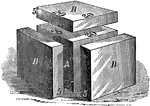
Cube with Additions 1
A cube (A) has sides of 20 inches in length each, making its solid contents equal 8000 cubic inches.…
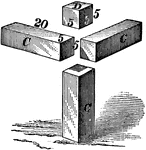
Cube with Additions 2
In order to fill in the spaces from the three 2000 cubic inch additions, four new additions must be…
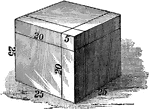
Cube with Additions 3
This is the final form of the original 20x20x20 inch or 8000 cubic inch cube with the addition of 7625…
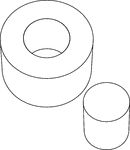
Cylinder Cut From a Cylinder
Illustration of a right circular cylinder with a smaller cylinder removed from the center and placed…
Hollow Cylinder
Illustration of a thin hollow cylinder. It resembles a washer and is often referred to as a disc.
